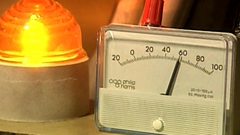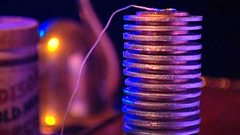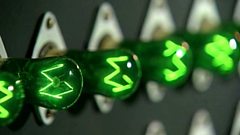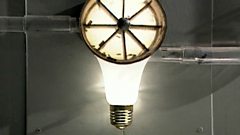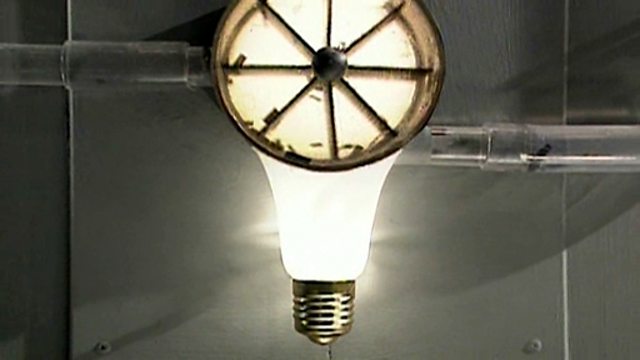
The power of batteries in a circuit
The key functions of a battery and bulb in a circuit are explained. A battery is a source of energy which provides a push – a voltage – of energy to get the current flowing in a circuit. A bulb uses the electrical energy provided by the battery, but does not use current. When the energy in the battery is used up there is no current and the bulb does not light up.
To demonstrate this, a model of a water circuit, with a water wheel, is shown. The turning water wheel represents a lit bulb in an electrical circuit. The moving water represents the current flowing around the circuit. A pump represents a battery providing the energy to move the water. When the water (current) stops flowing, the water wheel (the lightbulb) stops turning.
Duration:
This clip is from
More clips from Changing Circuits
-
![]()
Electrical circuits (clip compilation)
Duration: 00:42
-
![]()
Circuit diagrams
Duration: 01:25
-
![]()
How voltage affects the illumination of light bulbs
Duration: 00:40
-
![]()
The power of batteries in a circuit
Duration: 01:21
More clips from Science Clips
-
![]()
Weightlessness in space—Forces in Action
Duration: 01:21
-
![]()
Gravity on Earth, Jupiter and Pluto—Forces in Action
Duration: 01:22
-
![]()
The Moon and its orbit around Earth—Earth, Sun and Moon
Duration: 01:27
-
![]()
The Moon—Earth, Sun and Moon
Duration: 01:12

